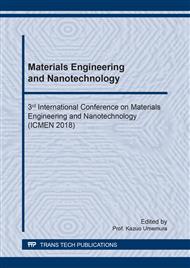p.20
p.25
p.31
p.37
p.42
p.47
p.53
p.58
p.63
Protein Corona on Gold and Silver Nanoparticles
Abstract:
Gold or silver nanoparticles (NP) were covered with protein corona by: 1) direct binding with a number of proteins; 2) nanoprecipitation of proteins from their solutions in fluoroalcohols; 3) physisorption of proteins on the NP surface treated with poly (allylamine) s; 4) encapsulation of Ag or Au NP into SiO2 envelope and functionalization with organosilanes. Adsorption of proteins on surfaces of metal NP is reversible and up to 70% of the attached proteins can be eluted. Ag NP possess high affinity for binding with immunoglobulins and fibrinogens but not with any protein. Nanoprecipitation of Ag and Au NP with proteins resulted in combined NP with metal core and protein shell with ligand-binding and enzymatic activities. SiO2 layer on surfaces of metal NP is suitable for silanization and covalent immobilization of any protein. Protein corona prevents Ag and Au NP from oxidation, dissolution and aggregation. Proteins attached to metal NP reduce their antimicrobial activity and cytotoxicity for eukaryotic cells. The developed methods of fabrication of Ag/Au NP with protein shells permit to attach any protein at different distances from metal core to avoid possible inactivation of proteins, to reduce fluorescence fading and to stabilize the nanoconjugates.
Info:
Periodical:
Pages:
42-46
Citation:
Online since:
October 2018
Price:
Сopyright:
© 2018 Trans Tech Publications Ltd. All Rights Reserved
Share:
Citation:


